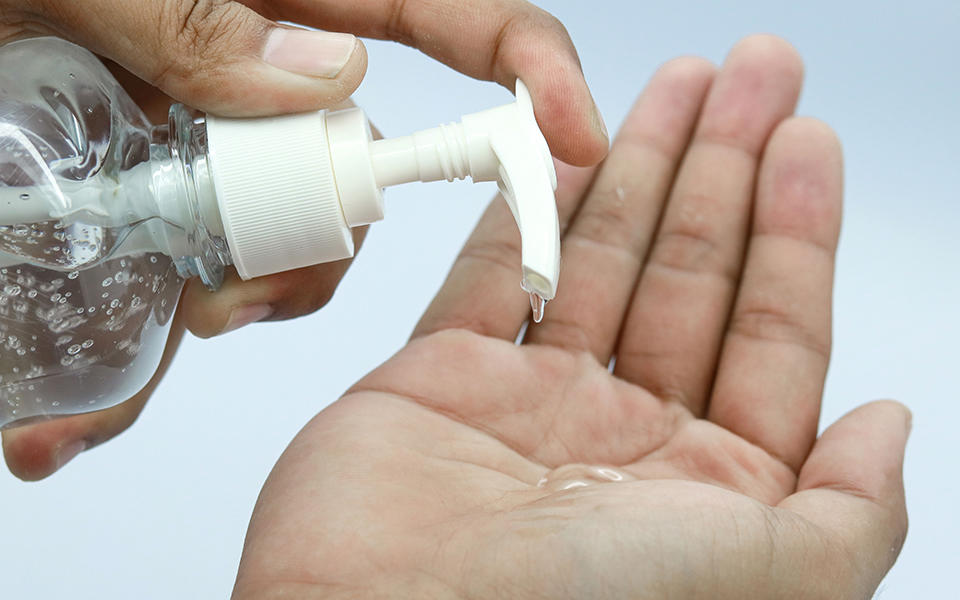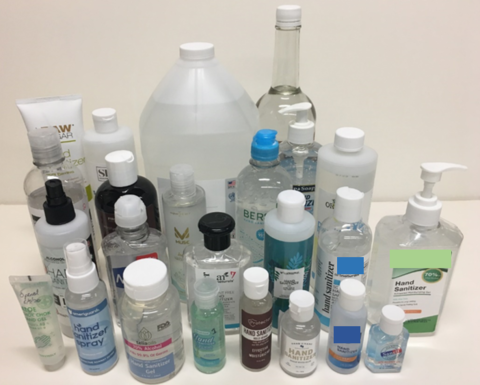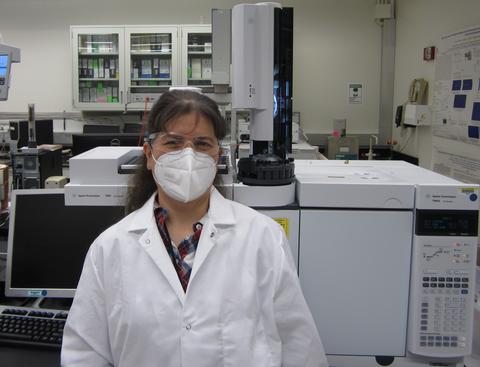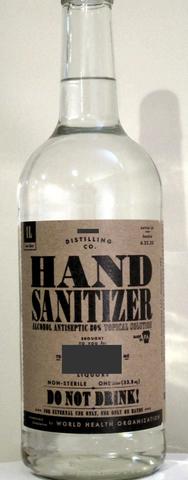Taking Measure
Just a Standard Blog

Like everyone on the planet, our organization, the National Institute of Standards and Technology (NIST), became concerned with the COVID-19 outbreak in March 2020. NIST scientists were anxious to provide any assistance they could to support COVID response efforts. As we were thinking of ways we could help, one of my colleagues, Walter Wilson, who often works closely with the local police department, got an unusual request: Could we analyze some samples of hand sanitizers to determine their safety?
In these early days of the pandemic, people thought that using hand sanitizer might be one of the main ways of preventing the spread of COVID-19 infection. And as you may remember, there initially was a shortage of hand sanitizers, and local distilleries and other manufacturers were helping to fill the gap thanks to emergency interim guidance from the World Health Organization (WHO) and the U.S. Food and Drug Administration (FDA). This guidance requires specific amounts of either ethanol, the kind of alcohol that people drink, or isopropanol, the kind of alcohol typically used to sterilize cuts, and limits the amount of 13 harmful impurities. Soon after, a flood of new products entered the marketplace.

The local police were concerned that these “newbie” product providers weren’t successfully meeting the criteria for safe and effective hand-sanitizer formulations needed to protect first responders. So, five of our analytical chemistry staff members (Mary Bedner, Aaron Urbas, Jacki Murray, Walter Wilson and me, Bill) teamed up and proposed to look at these hand-sanitizer samples using a number of measurement techniques at NIST. Although our original goal was to look at the three samples the police department submitted, we were also curious about how safe and effective these products were in general. We started buying commercial products, and the project quickly grew to ultimately evaluating 72 hand sanitizers!
We were anxious to investigate different approaches to hand-sanitizer measurements — with an eye toward simpler and less costly analytical methods that might be used by new and small vendors, such as local distilleries. Aaron suggested we could make rapid measurements of the alcohols using a technique called FTIR-ATR (Fourier transform infrared spectroscopy with attenuated total reflection). He also was curious to see if we could accurately measure trace levels of the impurities listed by the FDA by using NMR (nuclear magnetic resonance spectroscopy).

Jacki provided measurements of the alcohols and impurities using a comparatively common and relatively inexpensive technique called GC-FID (gas chromatography with flame ionization detection). However, FID could not definitively identify the impurities, so she also used GC-MS (GC with mass spectrometric detection) for many of the samples.
We were also curious if we could determine the ethanol content of hand sanitizers through a very simple technique that is commonly used in the alcoholic beverage industry, known as densitometry (finding the density of a liquid). In addition to Jacki’s two lab techniques, I attempted to measure ethanol content using a simple hydrometer, which floats in a liquid depending on its density. Unfortunately, we found that measuring the density tends to overestimate the ethanol content in hand-sanitizer products and is not recommended. I also made some measurements of the alcohols using another common analytical technique known as LC-UV (liquid chromatography with ultraviolet absorbance detection).

Aaron was the fastest at getting results using the FTIR screening method. The police department samples turned out to be OK with regard to ethanol content following the WHO formula. Among the other products we tested, one hand sanitizer made by a distillery and bought at a discount store came in what looks more like a 1-liter whiskey bottle, and, although clear, it smelled of whiskey, too! Still, it did meet the specifications.
With all the analytical laboratory techniques, we initially focused on identifying and measuring the amount of ethanol, which is the primary active ingredient for killing bacteria and viruses. However, another type of alcohol, methanol, is toxic and must be less than 0.063% of any hand-sanitizer formula. But I found one brand that had about 13% methanol by LC-UV! Aaron and Jacki were quick to confirm this result by other techniques. As methanol is cheaper than ethanol, vendors sometimes make this dangerous substitution. Methanol is poisonous, can be absorbed through the skin, and people have gone blind or even died from drinking contaminated products. Since March, the FDA has recalled many hand sanitizers. By our measurements, some of the hand sanitizers we looked at had low amounts of methanol, and three were found to exceed the FDA-recommended limit.
We also searched for 12 other harmful impurities listed by the FDA. Jacki’s technique of GC-FID was particularly good at separating both the active ingredients and impurities. The downside of this technique is that individual solutions had to be made to identify and measure each component. For some samples, Jacki also used GC-MS, in which the lab measurements can be used with the NIST Mass Spectral Library to make identifications. Aaron was also able to identify impurities in hand sanitizers using NMR by making comparisons to available spectral data from various sources and then confirming with known standards.
Working as a team, we had weekly teleconferences to compare notes on what compounds were being found in which hand-sanitizer samples. It became apparent that NMR was the most rapid method to identify and measure ethanol and most impurities, whereas FTIR-ATR was the fastest approach when just looking at ethanol. But comparing the various techniques quickly became a “battle of the bands” — vying for the title of most sensitive, easiest, most rapid and most reliable technique. Fortunately, for most of the samples, the four main analytical techniques agreed on the ethanol content measurements. Mary was often arbitrating these discussions, and we decided that not only did we find this internal NIST analytical “competition” interesting, but the information gathered about the techniques and measurements might be of great interest to hand-sanitizer manufacturers.
The team decided to write up the findings of this study under Mary's leadership, viewed from two standpoints.
First, how well do the commercial products meet the FDA and WHO recommendations? And second, what are the strengths and weaknesses of each analytical technique? This provides a choice for vendors — like new hand-sanitizer manufacturers — that are not familiar with such measurements.
Each team member wrote summaries of the analytical procedure used, measurement results and the advantages and limitations of their techniques, which are in the newly published NISTIR 8342, A Comparison of Measurement Methods for Alcohol-Based Hand Sanitizers.
The big surprises: About 40% of the commercial hand sanitizers did not meet the recommended specifications of the FDA because they had too many impurities and/or not enough ethanol! One product had notable amounts of the toxic methanol, and another had a high amount of benzene, a carcinogen. From the analyst’s viewpoint, we were amazed at the speed of FTIR-ATR and the surprising number of components that could be identified and measured using NMR, and not surprised that GC-FID would be a great method for doing it all. We hope hand-sanitizer manufacturers find this comparison of these “alternative” measurement techniques to be useful for their important work — making safe and effective products to help fight the spread of COVID-19.






Hand sanitizers are widely used as a basic protective measure against the Corona virus.
However, it is noted that substandard hand sanitizers are being placed on the market as evidenced by the various tests conducted on several samples.
In addition, the tests performed are based on sophisticated analytical techniques and are costly.
Hand sanitizers , being a basic protective measure against the virus, the authorities should have a market surveillance for these products based on the parameters determined.